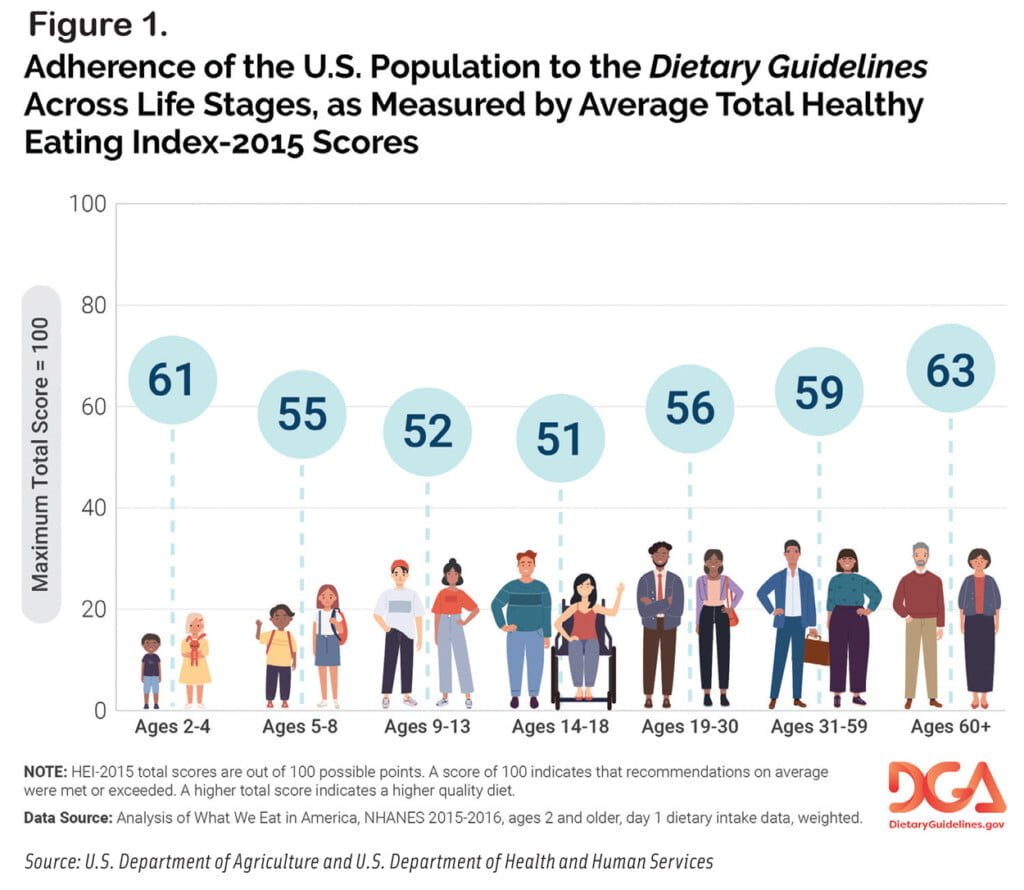Providing Nutritional Support for Children and Adolescents
Developing healthy eating habits early in life can help young Americans maintain them later in life. Unhealthy eating habits and lack of physical activity among children and adolescents ages 2 to 18 increase the risk of chronic diseases like type 2 diabetes and heart disease.
Health professionals, parents, caregivers, and guardians can help children develop healthy habits early in life.
The Healthy Eating Index Measures Dietary Quality
A scale of 0 to 100 measures diet quality, and the scores show that children and adolescents are not meeting the recommendations. The HEI score for toddlers is 61 out of 100. The HEI score drops by ten points as children age (14-18). Adolescents consume fewer vegetables, fruits, and dairy than younger children, but more sugar.
These unhealthy eating habits early in life disadvantage Americans as they grow up. That’s why encouraging healthy eating habits early on is vital.

Encouraging a Fit Diet
With the transition from preschool to school age and into adolescence comes a variety of opportunities to support a healthy diet. A new food can take up to ten exposures before a child accepts it.
Among the food acceptance strategies are:
- Providing cooked and raw vegetables
- Chopping up fruits and veggies
- Serve fruits or vegetables with a favorite food like yogurt or peanut butter.
Because children’s eating habits often mirror those of their parents, health professionals can help families in many ways.
- Shared meals — Early on in life, shared meals have a huge impact on modeling healthy eating habits. Making nutrient-dense foods and beverages a regular part of family meals helps kids develop healthy habits that last into adolescence and adulthood. Home meals also allow for repeated exposure to new foods.
- Nutrition-dense foods like fruits and vegetables can help shape a child’s diet. An apple with peanut butter or carrot sticks with hummus are better snacks than chips, crackers or cookies. Parents and caregivers can prepare healthy snacks like pre-cut vegetables ahead of time.
- Parents and caregivers can help children make age-appropriate meal choices, as well as help them shop and cook. When children feel empowered in their food choices, they learn to make healthy choices on their own. This strategy works well when eating out or ordering takeout.
- Reduce consumption of sugar-sweetened beverages to help children and adolescents maintain a healthy dietary pattern. Drinks with no added sugar should be preferred. Unsweetened fat-free or low-fat milk (including low-lactose or lactose-free options and fortified soy beverages). Natural fruit juice is also acceptable in recommended amounts.
Find Resources for Healthy Eating
Age, growth, development, and physical activity all influence calorie and nutrient requirements. As parents and caregivers help children adopt healthy eating habits, it’s critical to emphasize the impact of early dietary choices on later life stages. After all, every parent, guardian, or caregiver wants their kids to succeed in life.

